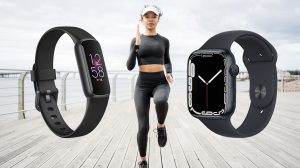Wearable technology has come a long way since its inception, and the future is looking even more exciting with the advent of smart clothing. Smart clothing, often referred to as e-textiles or electronic textiles, represents the next evolution of wearables. In this article, we’ll delve into the world of smart clothing and explore its potential to change the way we interact with technology and fashion.
The Fusion of Fashion and Technology
Smart clothing is a unique convergence of fashion and technology. It seamlessly integrates electronic components and fabrics, resulting in garments that are not only functional but also stylish and comfortable to wear. These garments can monitor, respond to, and even enhance various aspects of our daily lives. Here are some key features and benefits:
1. Health and Fitness Monitoring:
Smart clothing can incorporate sensors that monitor vital signs, such as heart rate, temperature, and even sweat composition. Athletes and healthcare professionals can use these garments to track performance and gather health data in real-time.
2. Thermoregulation:
Some smart clothing can adapt to changes in ambient temperature to keep the wearer comfortable. This feature is particularly useful for outdoor enthusiasts and those working in extreme environments.
3. Connectivity:
Smart clothing can be designed to connect with smartphones and other devices via Bluetooth or Wi-Fi. This connectivity allows wearers to access information, receive notifications, and control various functions without removing their phones from their pockets.
4. Gesture Control:
Imagine adjusting your music volume or answering a phone call with a simple hand gesture. Some smart clothing incorporates gesture recognition technology, allowing wearers to interact with devices and apps in a hands-free manner.
5. Safety and Visibility:
For cyclists, joggers, and nighttime pedestrians, smart clothing with built-in LED lights or reflective materials can improve visibility and safety.
6. Biometric Data Tracking:
Smart clothing can gather biometric data over time, creating a comprehensive health profile. This information is invaluable for individuals monitoring chronic health conditions or working to improve their fitness.
7. Accessibility:
Smart clothing has the potential to be a game-changer for individuals with disabilities. Garments with embedded sensors and haptic feedback can provide real-time guidance and support for people with visual or hearing impairments.
Fashion Forward and Sustainable:
One of the key advantages of smart clothing is that it doesn’t compromise on style. These garments are designed with aesthetics in mind and can be incorporated into various styles, from casual to formal wear. Additionally, smart clothing can be produced sustainably, using materials and manufacturing processes that are environmentally friendly.
Challenges and Future Prospects:
While smart clothing holds enormous promise, it also faces challenges. These include the need for affordable and washable electronic components, ensuring data privacy and security, and addressing potential health concerns related to prolonged exposure to wearable technology.
The future of smart clothing is exciting. As technology continues to advance, we can expect more innovative designs and applications. Imagine clothing that can adapt to your specific preferences, monitor your health, and connect you with the digital world seamlessly. In this new era of wearables, smart clothing is poised to revolutionize the way we interact with technology and fashion, providing a unique blend of function and style.












Add Comment